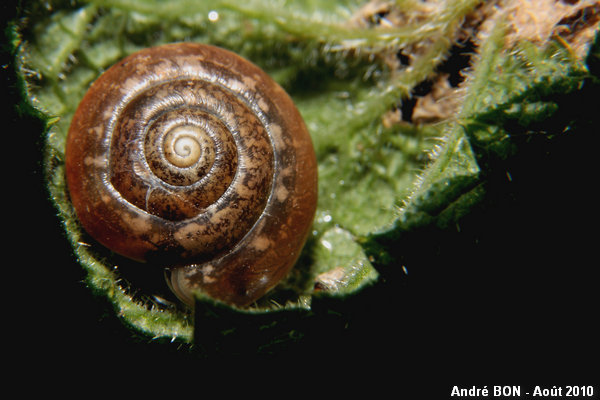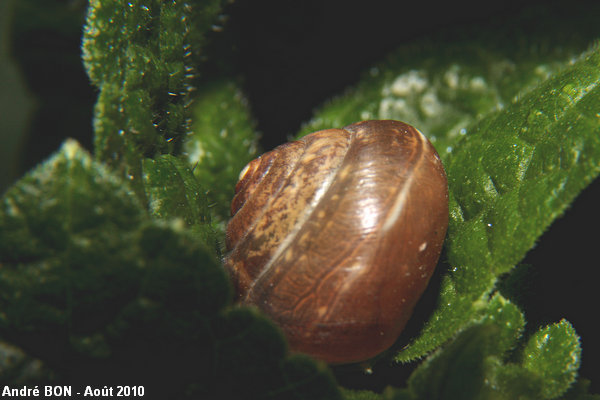

| Bush Snail (Fruticicola fruticum (O.F. Müller, 1774)) |


|
|
Scientific name: Fruticicola fruticum (O.F. Müller, 1774) Common name: Bush Snail Other names: Other scientific names: Helix fruticum, Bradybaena fruticum. French name: Hélice cerise, Escargot des haies. Order: Stylommatophora Size: Diameter of 13 to 23 mm, height of 10 to 19 mm. Habitat : Open woodlands and shrubs, preferred in damp places near small rivers or ponds. Food: Plants. Reproduction : Cross-fertilizing hermaphrodite. Geographic area: Europe, missing in the British Isles, Northern regions, western Asia. |
The Bush Snail has a slightly flattened globular shell. It is very variable in colour, from greyish white to reddish brown and even sometimes purple. The umbilicus is open and deep. The shell shows 5 to 6.5 whorls. The shell is thin and its transparency allows to see the pale colour of the body, forming patches or lines. The Kentish snail (Monacha cantiana) differs from the Bush Snail by a more flattened shell, height of 14 mm maximum. It is missing in forest habitats. The Copse Snail (Arianta arbustorum) which is also found in damp forests, shows an umbilicus entirely covered by the reflected margin of the aperture. It has a thicker shell, variable in colour but often brown with creamy white marks. |
| [To know more about the Bush Snail] [Next picture] [Top] |

|
I have observed this Bush Snail on a woodland edge, next to the bank of a pond. My identification of this species is based on the shape of the shell, its size of about 20 mm and its transparency allowing to see some patterns of the body. |
| [To know more about the Bush Snail] [Previous picture] [Top] |

|
This side view also gave some keys to tell the species apart. I am missing a view of the umbilicus but I did not want to disturb this quiet snail. |